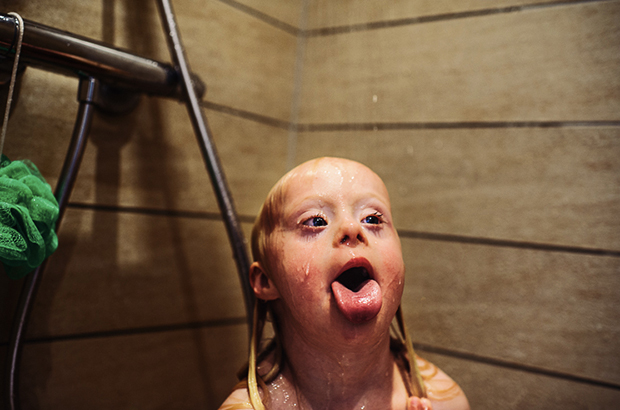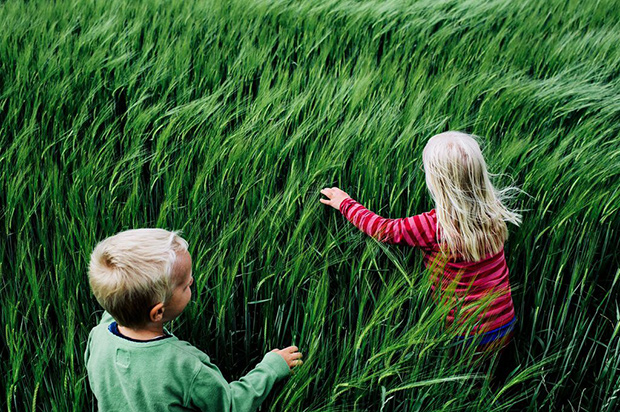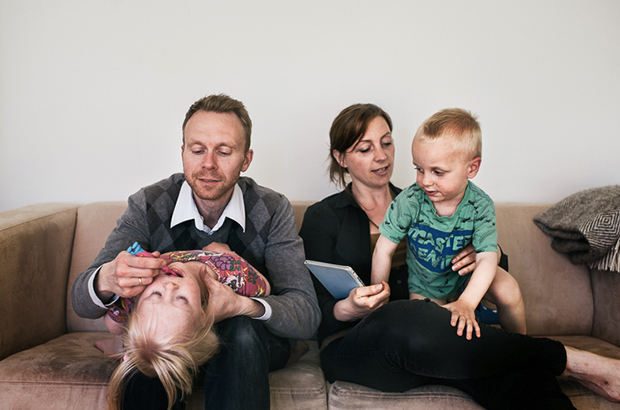Emmy loves meeting new people, says
German photographer Mario
Wezel of the
five-year-old girl whom he documented every other day throughout her
kindergarden school year. From his time with her, the photographer
discovered that Emmy has the rare ability of taking in the world
slowly, of becoming absorbed in fully her present surroundings, without
making prejudgements or assumptions. Emmy also happens to have been born with
Down syndrome.
Emmy lives
with mother, father, and little brother Kristian in the Denmark countryside,
close to Aarhus, where Wezel resided for a time. In Denmark, prenatal screening
tests are have been conducted since 2004 to estimate the chances of any one
child being born with Down syndrome. If expectant Danish parents face a
probability more of than 0.0033 percent, they are urged to undergo more invasive
tests. Ninety percent, when confronted with a future child with the genetic
disorder, will abort the pregnancy. When Martin and Karina were pregnant with
Emmy, their prenatal screening tests specified that they had a one in eight
hundred—or 0.00125 percent— chance of having a child with Down syndrome.
Wezel
embarked on One in Eight Hundred at first as a way of reconciling his
uncertainty about what he himself might choose should he find his girlfriend
pregnant with a potential child bearing a triplicate copy of chromosome
21. After studying a local community of facilities devoted to issues
surrounding Down syndrome, he reached out to Martin and Karina, who welcomed
him into their home over coffee. The spoke frankly, and the parents agreed to
allow the photographer intimate access into the daily goings on of their
household.
Emmy took
immediately to Wezel, as she did with most new friends. Family life with Emmy
unfolded candidly before his camera, and at times, he admits that he faltered;
some moments seemed too precious or confidential to be shared. His impulse to
understand Emmy and her life ultimately outweighed his reservations. He
acknowledges that he can only imagine and deduce what Emmy feels through the
lens of his own empathy, and yet he remembers well her time spent after school
baking with her parents and brother. Emmy’s parents had at that time enrolled
her in her local school; she had friends over for playdates.
Emmy’s life
has changed since Wezel first was introduced to her; she now
attends a public school some eighteen miles from her home. Other parents find
it difficult to make the long trek required to arrange playtime, but
Martin and Karina make a point of sitting down with Emmy to do her homework.
The photographer has grown attached to the family and to their daughter, and he
tries to make the trip as often as he can. Each time he returns, he finds Emmy
has grown. One in Eight Hundred, he explains, isn’t
about the ethics of screenings or even about the hypotheticals he set out to
explore; it’s simply about a girl named Emmy. When asked what he predicts for
Emmy’s future, he suggests that he wonders about it often; “I believe not very
different from the ones of other kids,” concludes the photographer.


















0 comments:
Post a Comment